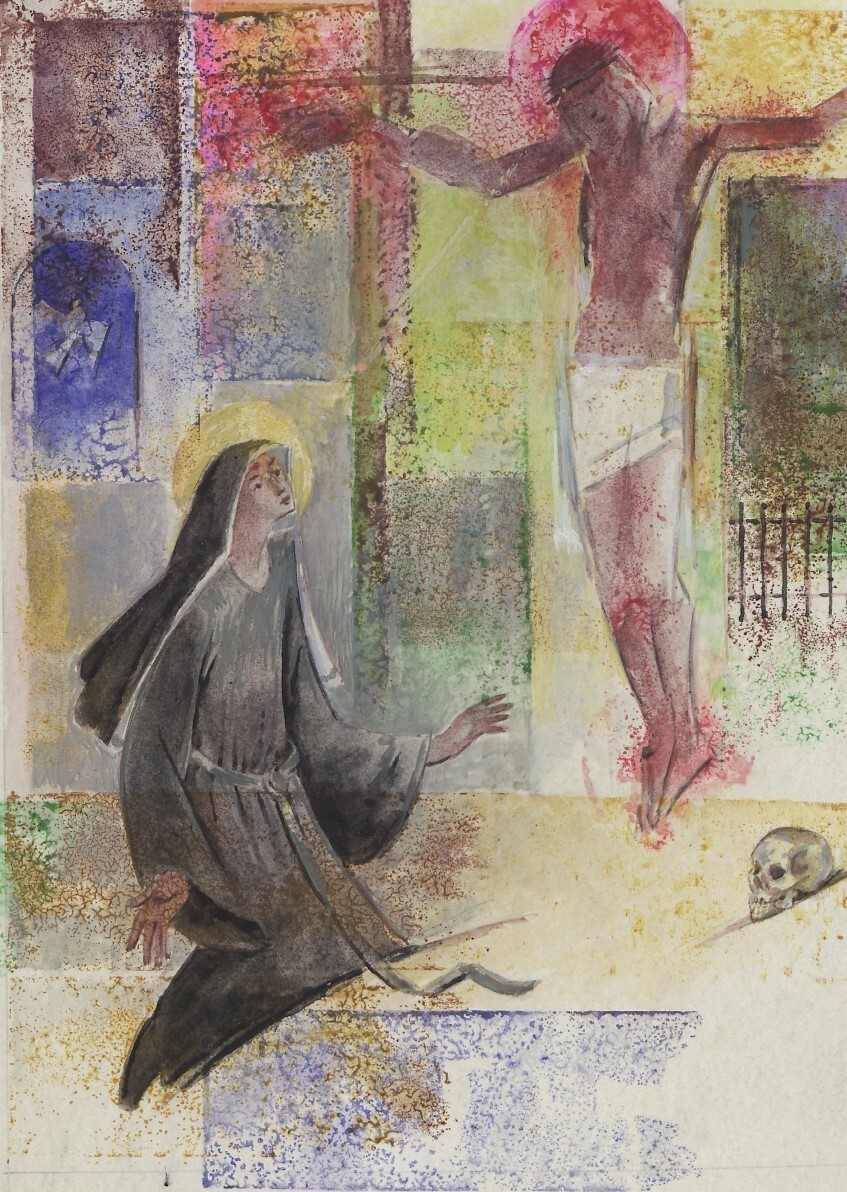Rita of Cascia - Feast day May 22
Saint Rita is by far the most famous saint of the Augustinian Order. She lived in the 15th century. Her fame became worldwide, especially after her canonization in 1900.
Rita was born, the only child of Antonio Lotti, in Rocca Porena, near Cascia in 1377. As a girl she thought about entering a monastery. However, when she was 14 years old, at the insistence of her parents, she married a young man who, although of good will, was reckless. When he was murdered in the 19th year of their marriage, Rita not only spared his killers but prayed to God that she would rather see her two boys die than seek revenge for their father's crime.
Shortly after their father's death, both sons, who were barely 20 years old, also died. Rita then tried to realize her desire for the monastery again. After several rejections, she was admitted to the convent of the Augustinian Sisters of Saint Magdalene in Cascia. There she led a consecrated life in holiness for 40 years. She was so moved by the suffering of Christ that she prayed to God for the grace to share in Christ's suffering. A thorn from the crown of Christ pierced her forehead. She carried this painful open wound for 15 years until her death. She died on May 22, 1447. She was solemnly buried two days later.
Through her intercession many miracles occurred, causing her worship to spread rapidly. Ten years after her death, her intact body was placed in a true sarcophagus. The year 1457 is the date of this transfer and not the year of her death, as previously thought.
It is typical of Saint Rita that she passed through all states of life, and was able to cope with suffering through her generous love and a true spirit of mortification. Because she opposed the violence caused by social conflicts in the Cascia region, she was considered a peacemaker and was given the title of "saint of the impossible."
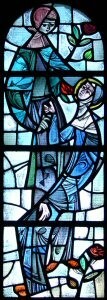
John of Sahagún - Feast day June 12
Johannes Gonzalez a Sancto Facundo, to call him by his full name, was born around 1430 in Sagagún in the Kingdom of Leon. The name Sahagún comes from the Benedictine abbey whose patron was Saint Facundus, a Spanish martyr from early Christianity. John, the son of a prominent family, received his early education in this Benedictine abbey. As a young man, and before he was even a priest, his father managed to obtain a church benefice for him, solely for economic reasons, which included pastoral care. John rejected it because he felt that such an act was contrary to the things of God.
Because of his good qualities he entered the service of the excellent Bishop of Burgos, Alphonsus of Carthage, who ordained him a priest. Because life in the episcopal curia was not at all satisfying to him, he asked the bishop to complete his theological formation. He studied at the University of Salamanca and at the same time he devoted himself to preaching. To fulfill his promise made during a serious illness, he joined the Augustinians in 1463. He became prior twice at the convent of Salamanca (1471-73 and 1477-79) where he promoted community discipline more by his example than by his severity.
He was humble and sincere, a tireless preacher. Through his zeal and courage he managed to settle a number of bitter feuds between noble families. He died in 1479. In 1690 he was canonized. He is the patron of the city and diocese of Salamanca. His remains are kept in the new cathedral.
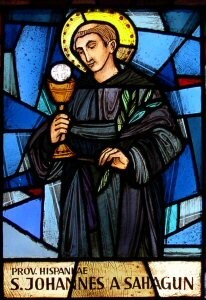
Clare of Montefalco - Feast day August 17
Clare was born about the year 1268 in Montefalco (Perugia) and lived there all her life. When she was six years old, she entered the hermitage where her sister Joanna stayed with some companions. In 1290, Joanna asked the Bishop of Spoleto to convert the hermitage into a monastery. The bishop gave her the Rule of Augustine. After the death of her sister on November 22, 1291, Clare was chosen as abbess of the monastery. She continued to hold this office until she died on August 17, 1308.
Clare's life is characterized by a combination of asceticism and warm love for the poor. Although she herself had received little training, learned theologians, such as Cardinals Nicolo da Prato and Umbertino da Casale, came to her for advice. Her community had in her an excellent predecessor in perfection and community. Christian life does not consist in outward signs, but in conformity of heart, mind and will with Christ. Her spirituality is a striking synthesis of Augustinian and Franciscan spiritual life. The most important characteristic of her spirituality is a 'unity' contemplation of the suffering of Jesus. Her saying was: 'If you seek the cross of Christ, take my heart. There you will find the suffering Savior.' These words were taken literally.
When her heart was examined after her death, the imprint of the cross of Christ was found in it. Although she was a mystic, she radically opposed a quietist sect called 'The Followers of the Free Spirit'. On her deathbed in 1308, her last appeal to her sisters was: 'Be humble, patient, and united in love. Conduct yourselves in such a way that God may be honored in you, and that the work He has wrought in you may not be lost in you.” She was canonized in 1881.
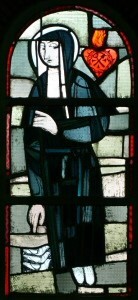
Monica, mother of Augustine - Feast day May 4 or August 27
Monnica was born in Thagaste (Algeria) in 331 or 332 as a child of a deeply religious family of good social standing. She spent her childhood under the care of a strict but pious educator, who had served the family for many years. She married Patricius. He was not a Christian and a few years older than Monica. Patricius worked as a Roman civil servant in the city administration, probably as a tax collector, but he was not really rich.
From a purely human point of view, Monica must have been a remarkably shrewd woman. The women around her knew that Patricius had a hot temper, and they were surprised that they saw no signs of abuse in his young wife. When asked how this was possible, she replied that the relationship with a husband was a matter of reason. She said she was careful not to get in his way when he was angry. Her attitude in this regard and her adaptability show great self-discipline. Monica was able to experience the conversion of her husband, who was baptized on his deathbed.
She showed the same prayerful patience in her relationship with her erring son. Augustine was born on November 13, 354 when Monica was 22 years old. She had two more children, Navigius and a daughter (whose name is unknown). Augustine did attract his mother's attention and concern to a large extent. She closely followed his study habits and progress with concern and pride. However, a temporary distance also arose when Monica refused to let Augustine, who had become a Manichaean, into her house. But her motherly heart continued to endure her son's error, as well as his concubinage, though not without constant admonitions and persevering prayer.
To stay close to him, he left his African motherland and followed him to Rome and Milan. Her prayers were finally answered, when Augustine not only was baptized but decided to dedicate his life to God's service. Together with her son they had a very intense religious experience in Ostia, a shared ecstasy. This shows how mother and son were spiritually close to each other. There was nothing more to be desired for Monica, her task was accomplished. She died in Ostia at the age of 55 just as Augustine and his friends were preparing to return to Africa. In his Confessions, Augustine gives an unforgettable image of his mother.
Monica was buried in Ostia. In 1162 some of her relics were brought to Arras in France and from here her veneration spread throughout the Church. Other relics were brought to our order's church San Agostino in Rome in 1430. The church and the order celebrate the feast of St. Monica on August 27.
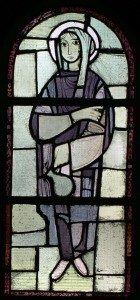
Augustine - Feast Day August 28
The life of Saint Augustine (354-430) took place in a time of crisis and transition. The Roman Empire is cracking at the seams under the oncoming foreign peoples. When Augustine died on August 28, 430, the Vandals stood before the city gates of Hippo. Since his appointment as a priest (391) and even more since his episcopal ordination, he has identified himself with his people. He worked tirelessly in the cause of God and in the service of the Church. He saw the restoration of unity in the church as one of the most important tasks. Partly to realize this unity more deeply, he founded religious communities. They would be the sign and bond of that unity. Even after his death, Augustine's influence remained fundamental to the Western Church. His many profound writings have been read and studied throughout the centuries and up to the present day. His spirituality is lived all over the world, in the many monasteries that follow his rule. His body rests in the Augustinian Church of San Pietro in Ciel d'Oro in Pavia.

Nicholas of Tolentino - Feast Day September 10
He was born about 1245 in Castel Sant' Angelo in Pontano (Macerata). He was of humble origins and joined the order at a young age. He studied at the provincial study center of the Marches in Ancona from 1262 to 1273. He can be described as a modest friar and priest, full of Christian love for his fellow brothers and other people; faithful in discharging the obligations of his religious profession. He regularly visited the sick and poor and supported them with great care. He was not ashamed to beg for his community. His sermons were very effective and people appreciated his spiritual guidance.
During the almost thirty last years of his life he lived in Tolentino, where he died on September 10, 1305. His body rests in the Augustinian Church in Tolentino. This basilica has a chapel known as Cappelone. It was originally dedicated to Augustine. But she became the center of the veneration of Saint Nicholas. It is painted with impressive frescoes depicting scenes from the life of the saint, events from the life of Christ and, in the dome, the Church Fathers. In the year 1446, Nicholas was included among the number of saints by Pope Eugene IV.

Alphonsus of Orozco - Feast day September 19
Alphonsus was born in Oropesa (Toledo) on October 17, 1500. Sent by his parents to study at the University of Salamanca, he entered the novitiate with the Augustinians there together with his brother Francis. Like his superior, Saint Thomas of Villanova, he always considered his entry into the order one of the greatest graces he had received from God in his life. He focused mainly on preaching and writing. As a zealous worshiper of the Virgin Mary, he always assumed that he was writing on her behalf. Even when he was appointed royal preacher at the court of Spain, he continued to prefer to preach to simple people, to the needy in hospitals and prisons and to friars.
He had an ardent desire to go to the mission in Mexico, but poor health prevented him from doing so. Fraternity, evangelical simplicity and restraint in dealing with his fellow brothers characterized his lifestyle. He was a true ascetic and a renowned mystic. He died in Madrid on September 19, 1591, still full of desire to work for souls in imitation of Christ. His remains are kept in the Church of the Augustinians in Valladolid.
He was beatified by Pope Leo XIII in 1882. He was canonized by Pope John Paul II on May 19, 2002
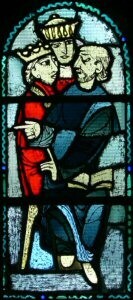
The Japanese Martyrs - Feast Day September 28
Just when expectations for a prosperous future in the Japanese missions were high, the situation became very bad with the arrival of the English and Dutch who convinced the emperor that he did not need Spanish missionaries to maintain trade relations with the countries of Europe. Thus, in 1614 the emperor issued a decree of expulsion of all missionaries and ordered the destruction of their churches. In 1617, the Augustinian Fernando de Ayala was put to death, followed a few months later by a Japanese Christian, Andreas Yoshida from Nagasaki. The Augustinian Pedro de Ziga fell into the hands of the Dutch and English who handed him over to the persecutors. He was burned alive in 1622 together with Captain Joaqun Hiroyama who had allowed him onto his ship. Bartolomé Gutiérrez had managed to escape from the persecutors since 1618 by staying in a cave during the day and with his faithful at night. In 1629 he was captured together with his catechist, Johannes Shozaburo, and burned at the stake in 1632. In 1633 the Portuguese Augustinian, Francisco Correa, was murdered in Nagasaki. The first native Augustinians, Thomas Jihioye and Miguel de San José, could hide more easily than their foreign confreres. Nevertheless, they too were killed in 1637. According to some sources, more than six hundred Augustinian Tertiaries were martyred. One of them, a girl of only twenty-three years old, Magdalene of Nagasaki, was canonized in 1987.

John Stone – Feast Day October 25
Several hundred English Catholics were put to death between 1535 and 1692. About forty of them, including John Stone, were canonized in 1970. John was a member of the English Province of the Augustinians. He probably started his religious life in Canterbury. The order had a foundation there since 1318. In 1538, the Dominican Ingworth, Bishop of Dover and accomplice of Cromwell, presented the prior of the Augustinians and his community in Canterbury with a document of renunciation of the faith and a letter of submission. However, John Stone refused to recognize the king as head of the church. Ingworth isolated John from the rest of the community in the hope of convincing him to sign. John stuck to his decision. Cromwell locked him up in prison for a year. In 1539 John was executed in Canterbury: first he was hanged, then the executioner cut his heart out of his body, his head and limbs were cut off and boiled in oil; later they were displayed at the city gates as a warning to others. In the same year 1539 the order ceased to exist in England; not one house remained. John Stone was canonized by Pope Paul VI on October 25, 1970. He is the patron saint of the English-Scottish province.
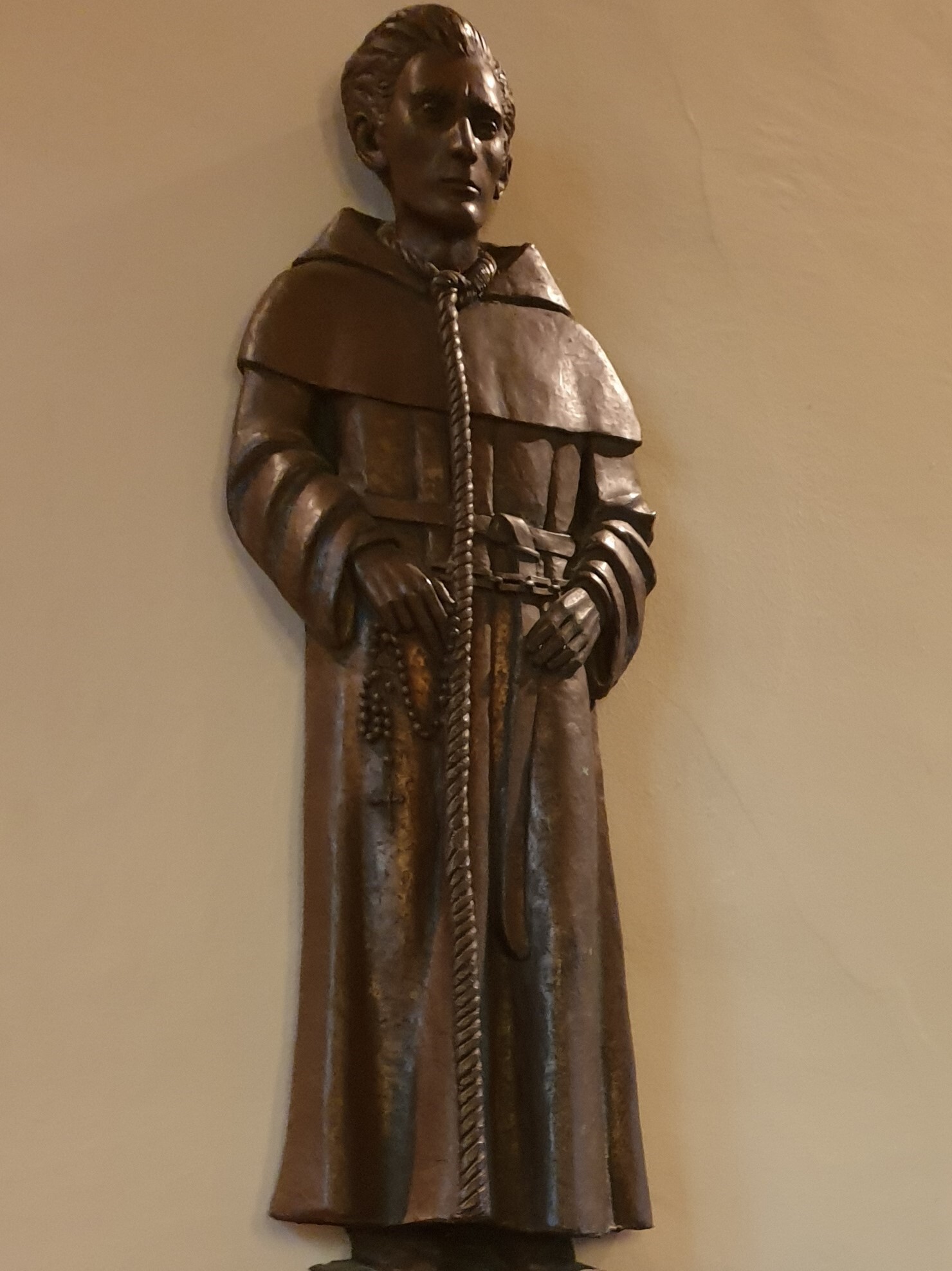
Thomas of Villanova - Feast Day November 25
Thomas was born in 1486 in Fuenllana in Castile (Spain). He kept Villanueva de Los Infantes, the place where he grew up, as his middle name. His parents were able to send him to study at the famous university of Alcalá de Henares, even though they were not well off. Thomas, 16 years old, was such an excellent student that, when he obtained the academic degree of magister artium, he was immediately offered a chair. He was professor at Alacalá University from 1513 to 1516. He entered the Augustinian Order in 1516 and was ordained a priest in 1518. He was prior in the priories of Salamanca, Burgos and Valladolid. He then became provincial of Andalusia (1527-1530) and of Castile (1534-1537). During this office he sent confreres to the New World where they founded the order in Mexico.
Charles V enjoyed listening to his sermons and often asked him for advice. He appointed him Archbishop of Granada but Thomas renounced it. In 1544 he was forced by obedience to assume the bishopric of Valencia. It was a wealthy but neglected diocese that had not had a resident bishop for more than 100 years. It was probably the sorry state of the diocese that prevented him from attending the Council of Trent. But most of the bishops of Castile consulted him before going to the council.
Thomas devoted himself with all his strength to the spiritual and material well-being of his people. He preached, taught, taught, and exhorted in private conversations and in public when necessary. Through his teaching and preaching he had a great influence on the advancement of study and spirituality within the order. He was also a promoter of the Devotio moderna in Spain. As a contemporary of Luther, in his sermons he sharply accused the clergy and friars of moral decay and disloyalty to the gospel.
He spent the rich income from the diocese to a large extent to help the poor. His concern for the little ones, the sick, the young in danger and the poor in need characterized his apostolate, so that people called him 'the father of the poor'. In this context he repeated the words of Augustine: 'The abundant goods of the rich belong by right to the poor. It is Jesus who receives our gifts in the poor. Many sermons and writings contributed to the spiritual literature of Spain. He died on September 8, 1555 and his body was interred in the cathedral of Valencia. He was canonized in 1658.
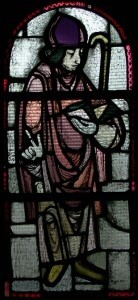
Other saints (days of remembrance) of the Augustinian order
January 3: S. Fulgentius of Ruspe
January 23: S. Josefa Maria of Benigánim
February 3: S. Stefanus Bellesini
February 13: S. Christina of Spoleto
February 16: S. Simon of Cascia
April 23: The Conversion of St. Augustine
April 26: Our Lady of Good Counsel
May 16: S. Alipius and Possidius
May 18: B. Wilhelmus of Toulouse
May 19: B. Clemens of Osimo and S. Augustine (Novellus) of Tarano
July 17: S. Magdalena Albrici
August 12: S. Johannes van Rieti
August 19: S. Ezekiel Moreno
August 26: S. Liberatus, Boniface and companions
September 4: Our Lady of Consolation
October 16: S. Wilhelmus (hermit of Malavalle) and B. Johannes Bonus
October 20: S. Magdelene of Nagasaki
October 21: B. Gundisalvus of Lagos
November 28: B. Gratia of Kotor
November 29: S. Fredericus of Regensburg
December 12: S. James of Viterbo
